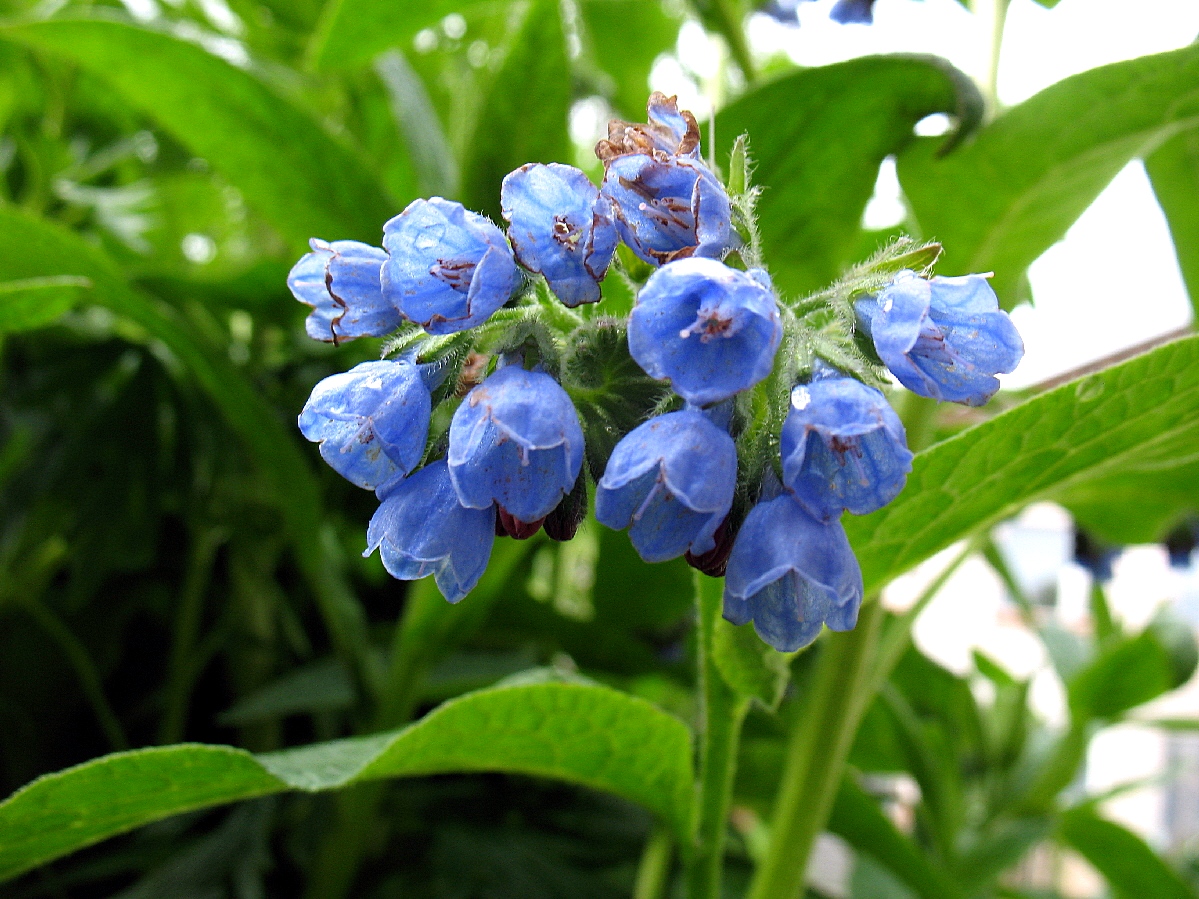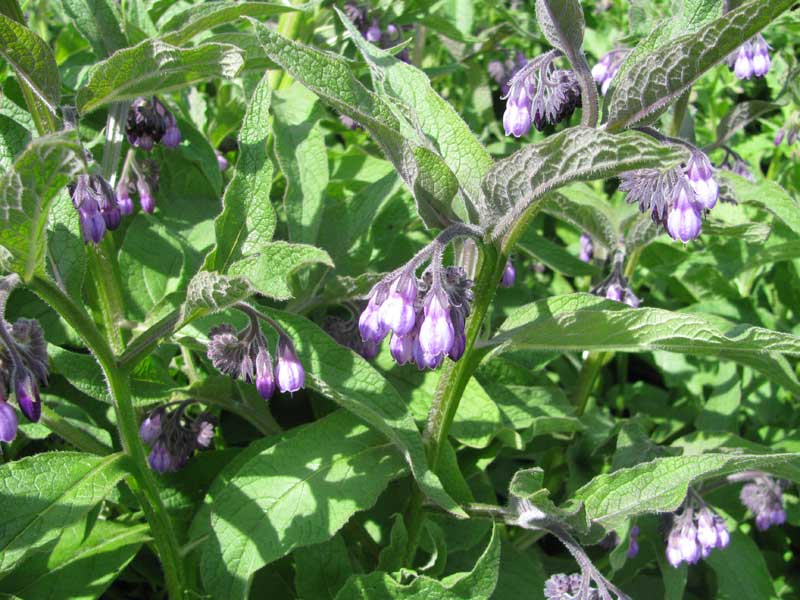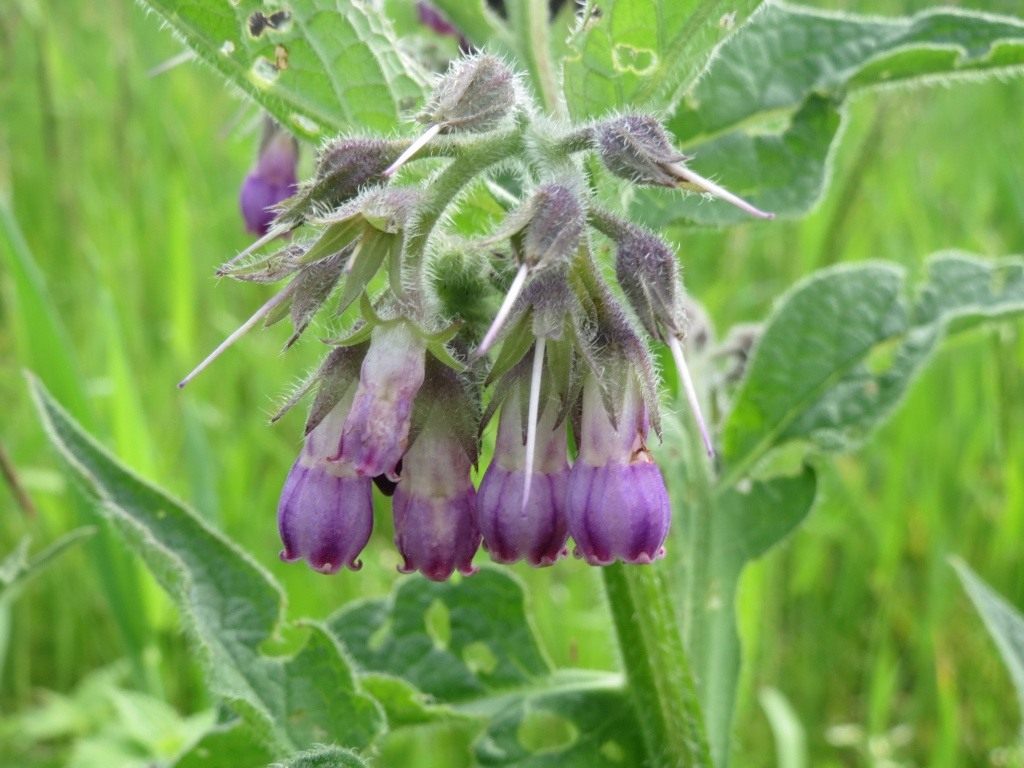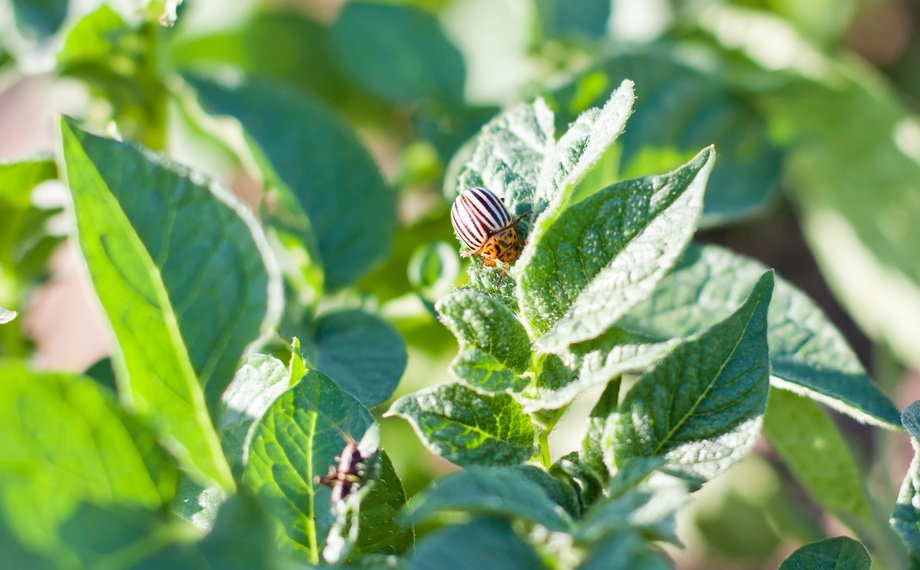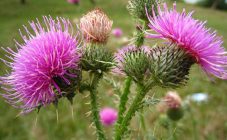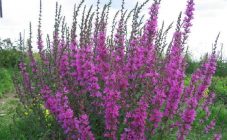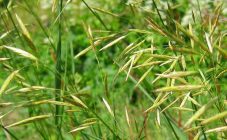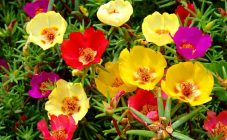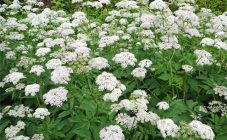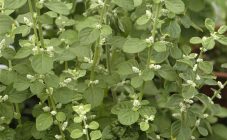Content:
Comfrey is one of the few plants in nature that can heal bruises, restore a patient after dislocations, fractures and similar injuries. The healing properties of culture are not limited to this. In order for them to manifest, the gardener must know what comfrey herb heals and how it can be used.
Short description
Comfrey is a genus of forest herbaceous perennials belonging to the Borage family. The plant is ubiquitous in Europe from the United Kingdom to western Asia. Other names of culture are often found in the literature:
- vis-grass;
- larkspur;
- bone breaker grass;
- bone crusher-joint grass;
- greasy root.
The stems of the plant are straightened and thickened, with spreading branches covered with fine hairs. The root system is voluminous, the roots are branched and thick, there are many processes on them. The roots are black on top, but inside they have a white color, greasy and juicy to the touch. The foliage is large, ovoid. The tip of the leaves is pointed. The lower leaves are attached to the stem with petioles, while the upper ones are sessile. Above, the leaves are covered with rough dense hairs.
The flowers are bell-shaped, arranged in racemose inflorescences on the top of the stems. At the first stages, the flowers are painted purple, red or lilac, gradually changing color to cream or blue. Flowering begins in May and usually lasts until July.
The plant does not have any soil preference and can grow on a variety of soil types. The culture under natural conditions propagates by seeds (including self-sowing), and in the cultural environment, propagation by rhizome segments is usually used.
Types and varieties
Comfrey grass is classified into the following varieties:
- comfrey hard;
- comfrey foreign;
- comfrey Caucasian;
- comfrey medicinal;
- comfrey large-flowered (large);
- eastern comfrey;
- comfrey hybrid.
In breeding, the Caucasian comfrey is most often used. After targeted cultivation and breeding, the following varieties appeared:
- Eminens;
- Goldsmith;
- Hydecot Blue;
- Lanthorns Pink.
Medicinal properties
Comfrey is characterized by a rich chemical composition. At the same time, one of the most important components of the plant is allantoin, a natural antibiotic that has a powerful anti-inflammatory and bactericidal effect. This compound relieves inflammation and promotes the formation of new cells, which allows for quick and effective treatment.
Because of this, comfrey has the following health benefits:
- anti-inflammatory;
- healing;
- antirheumatic.
The use of comfrey is widespread in the fight against severe bruises, fractures, dislocations, joint diseases, it relieves swelling and inflammation. Separately, it should be highlighted help in the healing of injured cartilage when using the plant. In addition, culture-based folk remedies should be used for the following diseases and problems with the body:
- bone tuberculosis, ostiomyelitis;
- periodontal disease, stomatitis;
- flu, pneumonia, colds, bronchitis, throat diseases;
- skin diseases, burns;
- ulcers of the gastrointestinal tract;
- neuralgia;
- hemorrhoids;
- fractures, sprains;
- arthritis, arthrosis, gout;
- external and internal bleeding, thrombophlebitis;
- soft tissue bruises, wounds with pus;
- mastopathy;
- cancer of the lungs, mammary glands, prostate, etc.
The plant has certain contraindications. So, the use of bone crusher grass and its treatment is limited or prohibited in the following cases:
- period of gestation and breastfeeding;
- the patient's age up to 18 years;
- allergies, individual intolerance;
- liver disease.
The duration of the treatment course should not exceed one and a half months per year when using alcohol tincture, ointment or gel. In addition to these dosage forms, infusions and decoctions for internal use are prepared from comfrey according to special recipes.
Diseases and pests
The plant is resistant to most pests and diseases. In some cases, plantings can be affected by brown spot. When grown in direct sunlight, foliage runs the risk of severe burns.
In order to protect comfrey from diseases and pests, appropriate fungicides and insecticides are used. Before using them, it is recommended that you try out certain folk remedies.
Harvesting and storage
It is necessary to collect comfrey roots in early spring, when flowers and stems have not yet begun to form. This should be done in a short time, since the healing properties of plant materials are gradually decreasing. The next period of harvesting the roots begins in autumn, when the seeds fall off.
The plant is dug out of the ground and lateral young roots are broken off from it, which are easily separated. The rest of the bush is planted back in the ground, where it will soon take root. The roots are thoroughly washed and cut in two. They are placed in the sun, under the wind, for drying, and then transferred to a dry, darkened room for final drying.
The roots are stored in cardboard boxes, cloth bags or tightly covered containers. The container should be located in rooms with low air humidity. If all the necessary storage conditions have been provided, the dried raw materials will retain their useful properties for three years.
If all the requirements for cultivation are met, you can get high-quality plantings of comfrey. They can then be used to make healthy folk remedies.
